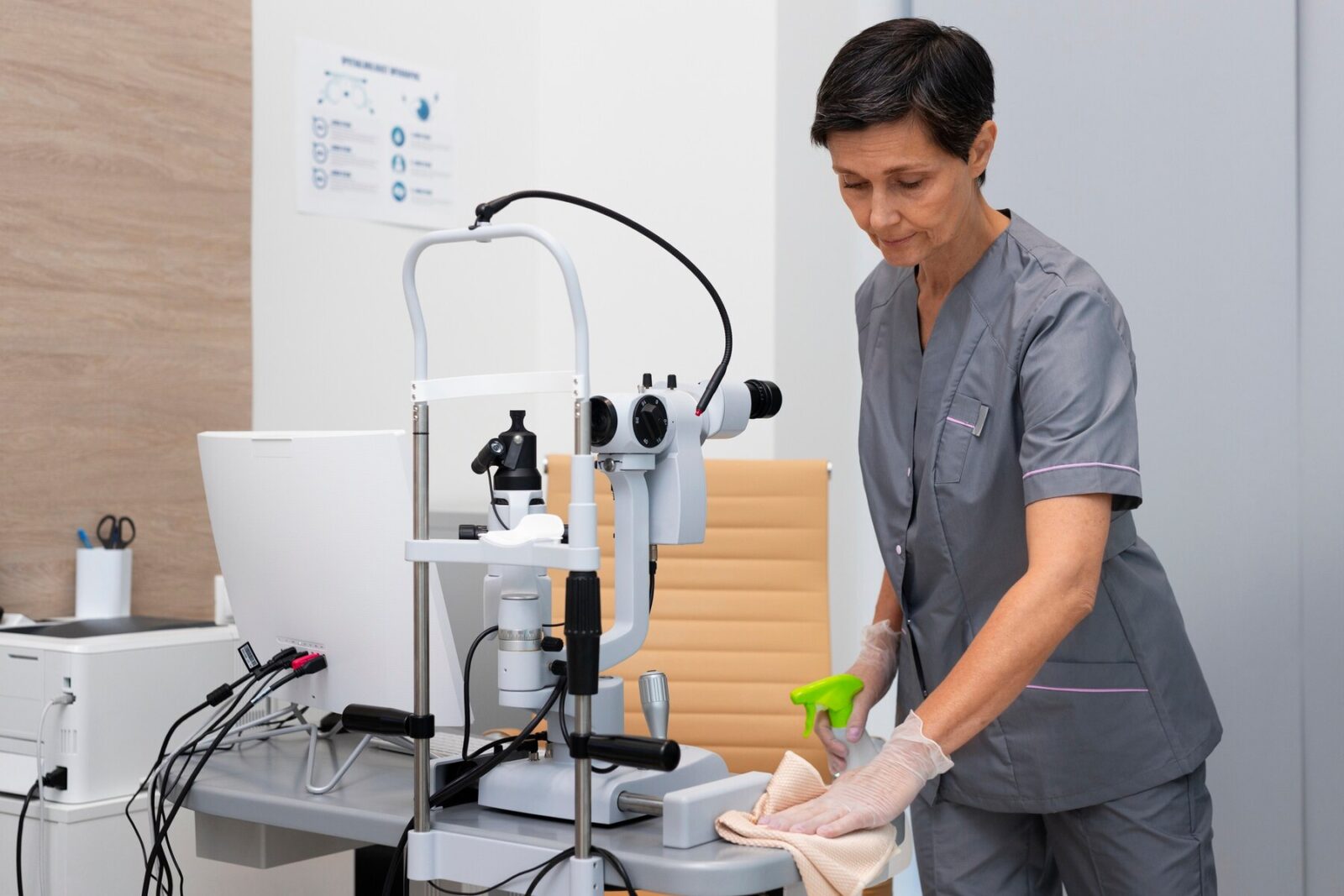
How To Select Food Storage Containers Based On Material: Glass, Plastic, Or Stainless Steel?
Selecting the right food storage containers is crucial for maintaining food freshness, quality, and safety. The material you choose directly...

Get 20€ off on your first order!
Cleaning medical equipment plays a crucial role in maintaining hygiene and ensuring patient safety in healthcare facilities. Selecting the right equipment is essential for meeting regulatory standards, enhancing efficiency, and reducing the risk of cross-contamination. This guide will walk you through the key considerations to make an informed decision.
Find the main use of cleaning medical equipment before you buy it. While some tools are meant for overall cleaning, others concentrate on sterilising or disinfecting.
| Purpose | Equipment Examples |
| Surface cleaning | Mops, cleaning cloths, vacuum cleaners |
| Instrument cleaning | Ultrasonic cleaners, washers |
| Sterilization | Autoclaves, chemical sterilizers |
Medical facilities in Europe must adhere to strict regulations to maintain safety and hygiene. Verify that the equipment complies with standards set by organizations like:
When picking medical equipment for cleaning, give the following traits the most weight:
Select equipment that delivers results in a short time frame to optimize workflow.
Ensure that the equipment is user-friendly with clear instructions to minimize training requirements.
Invest in equipment made from high-quality materials to withstand repeated use.
Check if the equipment is compatible with your existing tools, such as cleaning agents or sterilization pouches.
Opt for equipment designed to minimize water, energy, and chemical usage.
Selecting cleaning medical equipment requires a balance between price and quality. Think about:
Choosing a reliable supplier or manufacturer ensures quality and long-term support. Look for:
To use cleaning tools correctly, you need to be trained. Make sure that the manufacturers give you clear instructions.
Evaluate your facility’s specific requirements:
| Consideration | Question to Ask |
| Facility size | Does the equipment handle the workload? |
| Frequency of use | Is it built for continuous operation? |
| Type of medical devices | Is it suitable for cleaning sensitive tools? |
With increasing focus on sustainability, consider equipment that supports eco-friendly practices:
The type of the instrument will determine the optimum cleaning technique. For complex tools, ultrasonic cleaners work well; autoclaves are perfect for sterilisation.
Follow the instructions from the maker. Usually, this is done every 6 to 12 months, but it depends on how often it is used.
Yes, always use cleaning agents recommended by the equipment manufacturer to ensure compatibility.
Picking the correct medical cleaning tools is important for keeping up with health standards and making sure patients are safe. Healthcare facilities in Europe can make smart choices by looking at things like compliance, efficiency, cost, and how reliable the provider is. Take the time to think about what you need and get advice from people who work in the field.
Thank you! You've signed up for our newsletter.



















Selecting the right food storage containers is crucial for maintaining food freshness, quality, and safety. The material you choose directly...

Selecting the right disposable spoons doesn’t have to be overwhelming. By considering material, durability, design, and sustainability, you can make...

Looking for the perfect degreaser? This guide simplifies the choice between solvent-based and water-based options, helping you find the best...

Selecting the right food storage containers is crucial for maintaining food freshness, quality, and safety. The material you choose directly...

Selecting the right disposable spoons doesn’t have to be overwhelming. By considering material, durability, design, and sustainability, you can make...

Looking for the perfect degreaser? This guide simplifies the choice between solvent-based and water-based options, helping you find the best...
Get 10€ off on your first order!
Save 30% by buying directly from brands, and get an extra 10€ off orders over €100
Save 30% by buying directly form brands, and get an extra 10€ off orders over €100